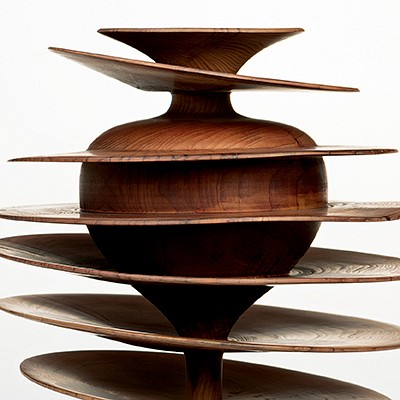Georg Jensen (Danish, 1866-1935) Acorn Pattern Sterling Silver Flatware Service, Denmark, late 20th century, eight soupspoons, eight te
Lot 1254
About Seller
Bonhams Skinner
274 Cedar Hill Street
Marlborough, MA 01752
United States
Founded over four decades ago, Bonhams Skinner offers more than 60 auctions annually. Bonhams Skinner auctions reach an international audience and showcase the unique, rare, and beautiful in dozens of categories, including the fine and decorative arts, jewelry, modern design, musical instruments, sc...Read more
About Auction
Catalog Only
By Bonhams Skinner
Dec 8, 2020 - Dec 17, 2020
Set Reminder
2020-12-08 12:00:00
2020-12-17 19:00:00
America/New_York
Bidsquare
Bidsquare : 20th Century Design
https://www.bidsquare.com/auctions/skinner/20th-century-design-6191
Our December sale offers over 500 lots for the discerning collector, dealer, or homeowner seeking furniture, artwork, and decorative objects spanning the 20th and early 21st centuries. Bonhams Skinner bidsquare@bonhamsskinner.com
Our December sale offers over 500 lots for the discerning collector, dealer, or homeowner seeking furniture, artwork, and decorative objects spanning the 20th and early 21st centuries. Bonhams Skinner bidsquare@bonhamsskinner.com
- Lot Description
Georg Jensen (Danish, 1866-1935) Acorn Pattern Sterling Silver Flatware Service, Denmark, late 20th century, eight soupspoons, eight teaspoons, eight tablespoons, eight dinner knives with stainless steel blades, eight dinner forks, eight luncheon knives with stainless steel blades, eight luncheon forks, eight salad/dessert forks, eight fruit spoons, eight demitasse spoons, eight butter spreaders, two small meat forks, a cheese knife with stainless steel blade, a bottle opener with stainless steel loop, a small ladle, a large ladle, three spoon and fork salad serving sets, a spoon and fork salad serving set with stainless steel tines and bowl, a jelly spoon, and two pickle forks, approx. 110 troy oz. weighable silver, together with two suede covered storage cases.
Note: Jensen was a Danish silversmith and founder of Georg Jensen A/S. He studied sculpture at the Royal Academy of Fine Arts and gained work as a modeler at the Bing & Grøndahl porcelain factory. In 1901, Jensen abandoned ceramics and began again as a silversmith and designer with Danish master Mogens Ballin—he opened his own workshop in Copenhagen in 1904. Jensen’s training in metalsmithing, combined with his education in the fine arts, led him to combine the two disciplines and produce his works under the “artist as craftsman” tradition that was becoming prevalent in Arts & Crafts.
Jensen won the Grand Prix at the 1915 World’s Fair, and with increasing international acclaim, the company enjoyed growth and prosperity throughout the 20th century. Operating director Anders Hostrup-Pedersen employed a number of award-winning designers including Sigvard Bernadotte, Henning Koppel, Søren Georg Jensen, Magnus
Stephensen, and Nanna Ditzel. Like the Danish furniture houses of the time, these designers were given the freedom to express themselves while developing new styles for
production. The work of Jensen designers was featured in exhibitions of Danish handicrafts at the Louvre in Paris, the Metropolitan Museum of Arts in New York and in 1962 at the Victoria & Albert Museum in London.Condition
Any condition statement is given as a courtesy to a client, is only an opinion and should not be treated as a statement of fact. Skinner Inc. shall have no responsibility for any error or omission. The absence of a condition statement does not imply that the lot is in perfect condition or completely free from wear and tear, imperfections or the effects of aging. - Shipping Info
-
Please visit http://www.skinnerinc.com/services/payment-and-shipping/ for information regarding the collection of items purchased at auction.
-
- Buyer's Premium



 EUR
EUR CAD
CAD AUD
AUD GBP
GBP MXN
MXN HKD
HKD CNY
CNY MYR
MYR SEK
SEK SGD
SGD CHF
CHF THB
THB












